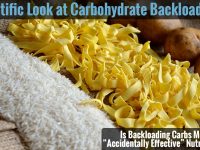A few weeks ago, I wrote an article exploring the biochemistry of energy metabolism. As I explained then, I think a lot of pseudoscience can be countered with a better understanding of basic science—not basic as in easy, but rather as in the fundamental concepts that have allowed the more specialized sciences to become defined. This is a bottom-up approach, and the hope is that anyone who learns and understands the basics can later apply that knowledge to more complex topics.
I also promised that there would be more interesting stuff to come in later articles, but that I wanted the basics to be in place first so it’s clear how later conclusions were derived. This article is the first in that series, and will focus in on some misconceptions about how exercise causes pain, fatigue, and the pump. Here we go.
#1: There’s No Such Thing as “Lactic Acidosis”
What causes that painful, burning sensation during long, hard climbs? If you ask a random person at the crag or gym, the most frequent answer you’ll hear is “lactic acidosis”. Yet if you look at the biochemistry of lactate production, it should be clear that this isn’t accurate at all!
It’s not a surprise that most people blame intramuscular acidosis and pain on lactic acid—it is, after all, commonly referred to as “lactic acidosis” even in modern biochemistry books, and if even biochemists cannot be relied upon to regularly refer to this phenomenon by a more accurate term, we should hardly expect laypeople to, either. After this section, however, I hope you will not be one of those people calling it “lactic acidosis”, because lactate really has nothing (direct) to do with the burning or fatigue.
For convenience and as a quick review, let’s look at the equations for the metabolism of glucose into pyruvate and then into lactate:
Glucose + 2ADP + 2Pi + 2NAD+ → 2 Pyruvate + 2ATP + 2NADH + 2H+ + 2H2O
2 Pyruvate + 2NADH + 2H+ → 2 Lactate + 2NAD+
Now, if you stopped the equation at the production of pyruvate, then for every glucose molecule you metabolize you would also increase intramuscular acidity by 2 H+ ions. On the surface, this makes it seem like carbohydrates—and eventually lactate—cause a more rapid increase in acidity. That’s only half the equation, however, because in an anaerobic environment all of that pyruvate will be reduced to lactate, a process which resorbs two H+ ions (in an aerobic environment, the pyruvate will be run through the citric acid cycle, getting rid of another 30+ H+ ions) and thus results in a total net change of nada H+ ion-wise.
In fact, not only does the conversion of pyruvate to lactate not increase the net acidity of the muscle, it actually buffers against rising acidity because lactate can be transported out of the working muscle in a way that H+ ions cannot by themselves. This allows the body to effectively shuttle acidity-inducing molecules out of the cell, which is even better than just temporarily absorbing them. Lactate exported this way will be regenerated back to glucose in the liver at a later time when oxygen is not at a premium.
So why does this misconception about “lactic acidosis” exist in the first place? There are a couple of possible reasons:
First, it could be simple ignorance combined with use of a misnomer. “Lactic acid” sounds like something that could increase cellular acidity, and so it’s an easy culprit. Of course, the body doesn’t really produce lactic acid in physiological conditions—it produces lactate, the conjugate base of lactic acid. If the body did produce lactic acid, it would contribute to acidity because lactic acid would be a H+ ion donor. Thus, if your understanding of the physiology of exercise is that the body produces lactic acid and not lactate then it’s a natural conclusion that “lactic acidosis” exists.
The second reason is more nuanced and relies on following the equation even further than the production of lactate. To begin, we are asked to consider why the body is metabolizing glucose in the first place, to which the answer is “to regenerate ATP”. The only reason to regenerate ATP is to provide the necessary energy for exercise, and as such we can assume that 100% of that ATP will be broken back down into ADP as soon as possible, releasing more H+ ions into the muscles. Viewed in this light, we might see the entire equation for the anaerobic metabolism of glucose as such:
Glucose + 2Pi + 2ADP → 2 Pyruvate + 2ATP + 2NADH + 2H+ + 2H2O → 2 Lactate + 2ADP + 2H2O + 2NAD+ + 2Pi + 2H+
Instead of the equation finishing simply with the clear production of lactate, it finishes with the same messy byproducts of ATP breakdown, including the release of H+ ions.
While this does serve the purpose of making lactic acidosis “real” (or perhaps lactate-induced acidosis, to be more accurate), I don’t find this line of reasoning convincing. We need to consider that ATP breakdown will always release H+ ions, regardless of how those ATP were restored (more on this in the next section). If we considered the aerobic metabolism of a glucose molecule (or a fat, or a ketone, or whatever), then we would always end up with the release of more H+ into the cell because the whole reason we’re regenerating that ATP is to spend it.
If we are going to view metabolism in this light, we should also consider what the consequences of not producing lactate from pyruvate would be—this wouldn’t actually happen in an anaerobic environment, but it does illustrate the flaws in the above argument.
Glucose + 2Pi + 2ADP → 2 Pyruvate + 2ATP + 2NADH + 2H+ + 2H2O → 2 Pyruvate+ 2ADP + 2H2O + 2NADH + 4H+
Now instead of a burden of 2 H+ ions per molecule of metabolized glucose, we have double that amount with 4 H+ ions per molecule. This would lead to a far more rapid increase in intramuscular acidity, which should make it clear that blaming lactate is erroneous; if we’re going to be increasing acidity either way, we really shouldn’t blame the molecule responsible for stemming the tide!
Lactate doesn’t cause acidosis, only energy consumption does—which leads us to the next point.
#2: All Muscular Acidosis Can Be Traced Back to ATP Usage
Look back through the all the equations I wrote out in my prior article on energy metabolism. How many of the equations absorb H+ ions (decrease acidity) and how many release them?
Ignoring the halfway points within the equations, you’ll find only a single complete equation that creates H+ ions, which is the equation for energy release:
ATP + H2O → ADP + Pi + H+ + energy
Every other equation results in either no net change in H+ ion levels (i.e., anaerobic glycolysis) or a net decrease (i.e., all the rest).
Practically speaking, this means that there is only a single thing we can blame intramuscular acidosis on: ATP usage. If you are using small enough amounts of ATP that you can fully meet your needs through the citric acid cycle, then you’ll be able to keep ahead of the acidosis curve. If you are using so much ATP that you cannot fully meet your needs through the citric acid cycle, then the amount of H+ ions in your muscles will increase and so will acidity.
To this end, it really doesn’t matter what fuels you’re using, the only things that matter are your energy demands and aerobic system capabilities. Higher intensity exercise by its very nature is ATP intensive and will always increase the H+ burden of your muscle cells, while aerobic exercise is of a low enough intensity that the citric acid cycle can be used to clear excess H+ ions before they stack up. The breakdown of the macronutrients in your diet cannot affect this because macronutrients are only useful insofar as they regenerate ATP, and the energy derived from the hydrolysis of one ATP will always come bearing an H+ ion.
Specifically, what this means is that creatine and carbohydrates are both inherently incapable of driving up intramuscular acidity and contributing to the pump because neither contribute directly to the H+ burden of your muscles. Furthermore, the only way a high-fat diet could hypothetically decrease the frequency of which you experience burning muscles or the pump is because you would also be limiting your ability to anaerobically burn energy—you’d have decreased your total capacity to exercise at a high intensity, decreasing the total breakdown of ATP of subsequent release of H+ ions.
To me, this is a critical realization because it demonstrates the futility of diet-based changes when it comes to some aspects of performance. Don’t get me wrong, diet is important and can alter your performance, but there’s no diet that can change how many H+ ions your body releases from the hydrolysis of ATP—which means that if your focus is to stop getting pumped you can only really train (to improve overall strength, oxygen delivery, and aerobic systems) to get there.
More to Come
I wanted to start with these two points because they’re the big picture items:
- There is no such thing as lactic acidosis, and in fact lactate buffers against acidity.
- 100% of H+ ion release is due to ATP breakdown and energy usage.
Next time, we’ll cover some of the more macronutrient-specific revelations related to energy metabolism—including how an understanding of energy metabolism illustrates the strengths and weaknesses of carbohydrates and fats. Until then!
Part I of this series can be found here, if you need a review!















Great articles! I’m looking forward to part three. I’m a personal trainer and climber and one of the questions I’ve had, specifically relating to climbing, is how to fuel…. so I’m looking forward. One question I have relating to part 1 – and if you’re going to cover this then I can wait… when we’re talking about the speed of energy metabolism how much “faster” is alactic anaerobic vs. anaerobic vs. aerobic? You often here about how much slower aerobic produces energy but what kind of measurement are we talking about here? nanoseconds? seconds? minutes? Is there a way you can relate the timeframe of “fast” and “slow”? Thanks again!
It’s a bit difficult to give exact figures when we talk about the relative “speed” of each system because so much influences them—the size of the system in a given person, their training status, etc.—but if we ignore all those factors and just look at how fast each system is at regenerating a single ATP then we end up with the following numbers:
So, in terms of pure capability, the phosphagen system is about twice as fast as anaerobic glycolysis, about four times as fast as aerobic glycolysis, and around eight times as fast as aerobic fat oxidation. Of course, this is complicated by things like our aerobic capability (if you’re a pro cyclist, you can probably regenerate a lot more ATP from aerobic metabolism than most people), so it’s not perfect—but it does at least demonstrate how much faster our anaerobic systems are and why our body relies on them when energy needs are high!
okay. that helps. thank you!
Great info! Another thing that helps with metabolism is iodine supplements. I recently started taking some from Cedar Bear and they have helped so much with my metabolism! We cannot make iodine ourselves and it is essential for thyroid hormone production which helps with our metabolism. Love your articles
We do need iodine, but only in very small amounts. Historically, iodine was a larger issue since some soils are deficient in it, but between globalization of agriculture and iodized salt it’s a much less common problem. I don’t usually recommend iodine supplements, but I do recommend people use iodized salt for their table salt.